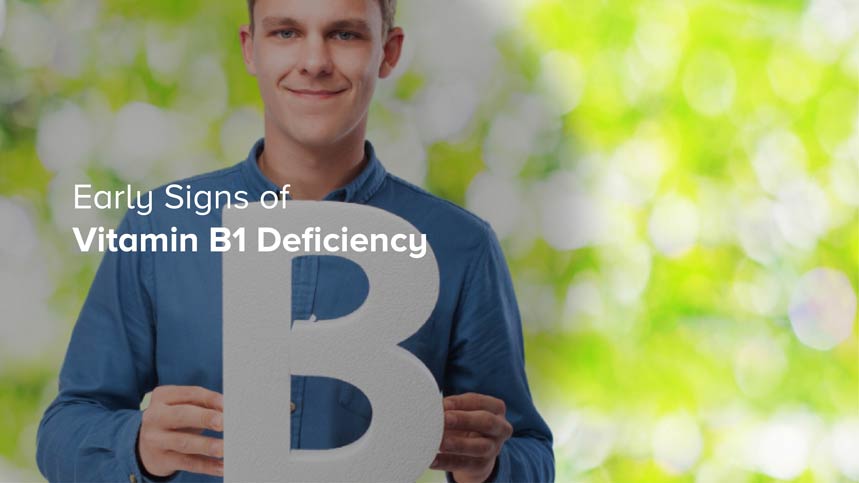


Condition
- Others
- Others
- Others
- Others
- Others
- Others
- Others
- Others
- Others
- Others
- Others
- Others
- Others
- Others
- Others
- Others
- Others
- Others
- Others
- Others
- Others
- Others
- Others
- Others
- Others
- Others
- Others
- Others
- Others
- Others
- Others
- Others
- Others
- Others
- Others
- Others
- Others
- Others
- Others
- Others
- Others
- Others
- Others
- Others
- Others
- Others
- Others
- Others
- Others
- Others
- Others
- Others
- Others
- Others
- Others
- Others
- Others
- Others
- Others
- Others
- Others
- Others
- Others
- Others
- Others
- Others
- Top tests
- Top tests
- Top tests
- Top tests
- Top tests
- Top tests
- Top tests
- Top tests
- Top tests
- Preventive Health Checkup
- Top tests
- Top tests
- Top tests
- Top tests
- Blood Banking & Transfusion
- Lifestyle Packages
- Blood Banking & Transfusion
- Blood Banking & Transfusion
- Top tests
- Top tests
- Lifestyle Packages
- Diabetes
- Blood Banking & Transfusion
- Blood Banking & Transfusion
- Blood Banking & Transfusion
- Blood Banking & Transfusion
- Blood Banking & Transfusion
- Others
- Others
- Others
- Others
- Blood Banking & Transfusion
- Blood Banking & Transfusion
- Blood Banking & Transfusion
- Blood Banking & Transfusion
- Vitamin Deficiency
- Vitamin Deficiency
- Vitamin Deficiency
- Vitamin Deficiency
- Vitamin Deficiency
- Blood Banking & Transfusion
- Blood Banking & Transfusion
- Blood Banking & Transfusion
- Blood Banking & Transfusion
- Diabetes
- Diabetes
- Heart Disease & Hypertension
- Preventive Health Checkup
- Diabetes
- Preventive Health Checkup
- Preventive Health Checkup
- Diabetes
- Diabetes
- Heart Disease & Hypertension
- Top tests
- Heart Disease & Hypertension
- Diabetes
- Top tests
- Diabetes
- Heart Disease & Hypertension
- Lifestyle Packages
- Heart Disease & Hypertension
- Lifestyle Packages
- Heart Disease & Hypertension
- Heart Disease & Hypertension
- Lifestyle Packages
- Preventive Health Checkup
- Preventive Health Checkup
- Top tests
- Preventive Health Checkup
- Heart Disease & Hypertension
- Heart Disease & Hypertension
- Heart Disease & Hypertension
- Top tests
- Top tests
- Lifestyle Packages
- Heart Disease & Hypertension
- Heart Disease & Hypertension
- Top tests
- Heart Disease & Hypertension
- Preventive Health Checkup
- Diabetes
- Lifestyle Packages
- Heart Disease & Hypertension
- Top tests
- Heart Disease & Hypertension
- Heart Disease & Hypertension
- Diabetes
- Lifestyle Packages
- Preventive Health Checkup
- Diabetes
- Top tests
- Diabetes
- Allergy
- Heart Disease & Hypertension
- Diabetes
- Heart Disease & Hypertension
- Diabetes
- Lifestyle Packages
- Lifestyle Packages
- Top tests
- Preventive Health Checkup
- Lifestyle Packages
- Preventive Health Checkup
- Preventive Health Checkup
- Diabetes
- Top tests
- Heart Disease & Hypertension
- Preventive Health Checkup
- Top tests
- Heart Disease & Hypertension
- Lifestyle Packages
- Lifestyle Packages
- Diabetes
- Preventive Health Checkup
- Top tests
- Diabetes
- Top tests
- Preventive Health Checkup
- Preventive Health Checkup
- Preventive Health Checkup
- Diabetes
- Lifestyle Packages
- Lifestyle Packages
- Heart Disease & Hypertension
- Lifestyle Packages
- Heart Disease & Hypertension
- Lifestyle Packages
- Preventive Health Checkup
- Preventive Health Checkup
- Preventive Health Checkup
- Lifestyle Packages
- Top tests
- Lifestyle Packages
- Top tests
- Lifestyle Packages
- Top tests
- Diabetes
- Diabetes
- Others
- Blood Disorders
- Top tests
- Others
- Others
- Others
- Fever
- Fever
- Blood Disorders
- Blood Disorders
- Preventive Health Checkup
- Preventive Health Checkup
- Profile
- Kidney Disease
- Kidney Disease
- Diabetes
- Diabetes
- Heart Disease & Hypertension
- Preventive Health Checkup
- Lifestyle Packages
- Thyroid Disorder
- Diabetes
- Diabetes
- Diabetes
- Diabetes
- Diabetes
- Diabetes
- Diabetes
- Top tests
- Allergy
- Top tests
- Top tests
- Top tests
- Top tests
- Diabetes
- Top tests
- Diabetes
- Top tests
- Top tests
- Top tests
- Liver Disease
- Diabetes
- Top tests
- Vitamin Deficiency
- Top tests
- Top tests
- Liver Disease
- Top tests
- Top tests
- Top tests
- Anemia
- Anemia
- Anemia
- Diabetes
- Diabetes
- Anemia
- Top tests
- Top tests
- Top tests
- Preventive Health Checkup
- Thyroid Disorder
- Heart Disease & Hypertension
- Top tests
- Preventive Health Checkup
- Diabetes
- Heart Disease & Hypertension
- Top tests
- Fever
- Allergy
- Liver Disease
- Lifestyle Packages
- Heart Disease & Hypertension
- Top tests
- Arthritis
- Top tests
- Top tests
- Heart Disease & Hypertension
- Kidney Disease
- Preventive Health Checkup
- Allergy
- Top tests
- Lifestyle Packages
- Top tests
- Kidney Disease
- Top tests
- Lifestyle Packages
- Top tests
- Preventive Health Checkup
- Preventive Health Checkup
- Top tests
- Top tests
- Vitamin Deficiency
- Allergy
- Diabetes
- Top tests
- Top tests
- Top tests
- Top tests
- Heart Disease & Hypertension
- Allergy
- Top tests
- Preventive Health Checkup
- Top tests
- Top tests
- Infertility
- Top tests
- Lifestyle Packages
- Allergy
- Diabetes
- Heart Disease & Hypertension
- Lifestyle Packages
- Preventive Health Checkup
- Preventive Health Checkup
- Top tests
- Preventive Health Checkup
- Top tests
- Diabetes
- Top tests
- Infertility
- Top tests
- Thyroid Disorder
- Top tests
- Allergy
- Preventive Health Checkup
- Vitamin Deficiency
- Top tests
- Top tests
- Infertility
- Lifestyle Packages
- Diabetes
- Liver Disease
- Kidney Disease
- Vitamin Deficiency
- Top tests
- Heart Disease & Hypertension
- Heart Disease & Hypertension
- Top tests
- Heart Disease & Hypertension
- Heart Disease & Hypertension
- Heart Disease & Hypertension
- Infertility
- Heart Disease & Hypertension
- Vitamin Deficiency
- Vitamin Deficiency
- Arthritis
- Arthritis
- Top tests
- Top tests
- Lifestyle Packages
- Preventive Health Checkup
- Lifestyle Packages
- Preventive Health Checkup
- Vitamin Deficiency
- Top tests
- Lifestyle Packages
- Lifestyle Packages
- Preventive Health Checkup
- Top tests
- Preventive Health Checkup
- Top tests
- Heart Disease & Hypertension
- Infertility
- Top tests
- Top tests
- Preventive Health Checkup
- Lifestyle Packages
- Top tests
- PCOD
- Preventive Health Checkup
- Lifestyle Packages
- Preventive Health Checkup
- Top tests
- Fever
- PCOD
- Kidney Disease
- Top tests
- Top tests
- Preventive Health Checkup
- Preventive Health Checkup
- Liver Disease
- Thyroid Disorder
- Top tests
- Heart Disease & Hypertension
- PCOD
- Top tests
- Arthritis
- Preventive Health Checkup
- Kidney Disease
- Lifestyle Packages
- Top tests
- Allergy
- Top tests
- Top tests
- Diabetes
- Thyroid Disorder
- Preventive Health Checkup
- Top tests
- Lifestyle Packages
- Preventive Health Checkup
- Top tests
- Kidney Disease
- Liver Disease
- Infertility
- Top tests
- Anemia
- Top tests
- Top tests
- Top tests
- Preventive Health Checkup
- Bone Health
- Cancer
- Fatty Liver

Tests
In the intricate ecosystem of our bodies, the liver stands as both gatekeeper and caretaker. It tirelessly works to process nutrients, aid digestion, and filter toxins. When it comes to the human body, the value of a healthy liver cannot be overstated. But what about when this vital organ starts to falter? For many, the signs of liver damage can creep up insidiously, presenting little by little until the symptoms become too persistent to ignore. Here,in this article we explores the hidden red flags that often go unnoticed until it’s too late, and imparts valuable insights for safeguarding this silent workhorse of our anatomy.
A Primer on Liver Health and Its Underlying Importance
Before we can understand how liver damage manifests, it's crucial to appreciate the scope of its functions. From digesting food to purging toxins, the liver's responsibilities are nothing short of monumental.
The liver processes everything we eat, drink, and breathe into forms that our bodies can utilize or safely expel. It metabolizes nutrients from food to produce essential proteins and enzymes the body needs to function. It also stores some of these substances, as well as vitamins and minerals, until they are needed.
In addition, the liver plays a central role in the body's metabolic functions. It regulates the composition of blood, including the amounts of sugar (glucose), protein, and fat. It also takes part in breaking down these substances for energy or as building blocks for body tissues.
Liver health is critical to overall well-being, with dysfunction potentially leading to a range of health problems. When the liver becomes diseased or damaged, the loss of those crucial functions can significantly impact your health and even be life-threatening.
The Role of the Liver and Common Liver Diseases
The liver acts as the body's major filter, clearing out toxins that could lead to various diseases. However, it's not invincible. Liver diseases, such as fatty liver disease, hepatitis, and cirrhosis, can strike, often without warning, causing the organ to deteriorate over time.
1) Fatty Liver Disease
This condition, characterized by the accumulation of fat in liver cells, is often the result of excessive alcohol consumption, although non-alcoholic fatty liver disease (NAFLD) can afflict those who don't drink heavily. It’s the most common liver condition in the United States, affecting millions of adults and children.
2) Hepatitis
Hepatitis, an inflammatory condition of the liver, can be caused by various factors, including viral infections and autoimmune diseases. The viral forms are particularly virulent, with hepatitis B and C leading to chronic liver disease in millions worldwide.
3) Cirrhosis
Cirrhosis is the severe scarring of the liver and poor liver function seen at the terminal stages of chronic liver disease. The scarring is most often caused by long-term exposure to toxins, such as those present in alcohol, or the chronic inflammation that can result from prolonged hepatitis. Over time, the liver will fail, and death may result.
Warning Sign 1: Unexplained Weight Loss
For many people, unexplained weight loss might seem like a happy accident, especially if they've been trying to shed a few pounds. However, when weight slips away without effort, the explanation could lie within the liver.
The Liver's Connection to Metabolism
The liver plays a pivotal role in metabolism, the process by which your body converts what you eat and drink into energy. More specifically, the liver is the primary site of removing excess glucose in the form of glycogen to help stabilize blood sugar levels between meals.
Weight Loss and Liver Damage
Unintended weight loss can be a sign of liver scarring (cirrhosis). As the liver fails, it loses its ability to store and release glycogen, which serves as a quick source of energy. Consequently, your body turns to stored fat and muscle as sources of fuel, leading to weight loss.
Warning Sign 2: Jaundice
Jaundice is the yellowing of the skin and eyes, a telltale symptom of liver disease. It occurs when there is too much bilirubin (a product of the breakdown of red blood cells) in the body, a sign that the liver isn't filtering bilirubin properly.
The Significance of Jaundice
Jaundice is often an early sign of liver disease and indicates the liver is struggling. It can also be a sign of other conditions, such as pancreatic cancer, so it’s essential to seek medical attention should you notice yellowing in your skin or eyes.
Warning Sign 3: Digestive Issues
The liver is intricately connected to the digestive system, as it secretes bile, helps in fat digestion, and processes and stores nutrients.
The Liver in Digestion
The liver's role in digestion is to produce bile, which is essential for breaking down and absorbing fats. Bile is stored in the gallbladder and released when the body needs to digest food.
Digestive Symptoms and Liver Disease
When the liver is damaged, digestive issues can occur, including indigestion, nausea, vomiting, and a decrease in appetite. Stool may also become pale, bloody, or tar-colored, due to a lack of bile reaching the intestines, affecting the breakdown of foods and digestion.
Warning Sign 4: Fatigue and Weakness
One of the less specific but more pervasive signs of liver trouble is prolonged fatigue and weakness. This is because the liver, when damaged, can't perform its metabolic functions to the same degree.
Liver Damage and Energy Depletion
The liver helps store and regulate the body's energy levels. When the liver is damaged, it can't store glycogen or produce blood proteins, both of which contribute to maintaining energy levels. Fatigue sets in as a result of the body's metabolic disruption.
Prevention and Management Tips
Prevention of liver damage is preferable to having to manage its consequences, and it begins with lifestyle choices.
Lifestyle Changes for a Healthy Liver
Maintaining a healthy weight through diet and exercise, limiting alcohol consumption, and avoiding exposure to liver toxins are critical to keeping your liver in good shape. Additionally, practicing safe sex and avoiding sharing drug paraphernalia can reduce your risk of hepatitis.
Dietary Recommendations for Liver Health
Eating a diet high in fruits, vegetables, whole grains, and lean proteins can help keep your liver healthy. Limiting foods high in sugar, salt, and fat is also recommended, as is drinking plenty of water to help flush toxins from your body.
The Role of Regular Health Check-ups
Regular visits to your healthcare provider can help detect liver problems early, when they're most treatable. Blood tests can check for signs of liver disease, and imaging tests like ultrasounds and CT scans can show structural changes in the liver.
Conclusion
A damaged liver can be a silent but deadly enemy. By recognizing the warning signs and acting swiftly to address them, we can protect this vital organ and, in turn, our overall health. Be proactive about your well-being, pay attention to your body's signals, and don't hesitate to seek professional healthcare advice if you suspect liver trouble. Together, through knowledge and action, we can keep our livers—and our lives—healthy and thriving.
WANT TO BOOK HEALTH CHECKUP ?
Categories
Others
74
Top tests
100
Preventive Health Checkup
46
Blood Banking & Transfusion
16
Lifestyle Packages
35
Diabetes
40
Vitamin Deficiency
12
Heart Disease & Hypertension
37
Allergy
9
Blood Disorders
3
Fever
4
Profile
1
Kidney Disease
8
Thyroid Disorder
5
Liver Disease
6
Anemia
5
Arthritis
4
Infertility
6
PCOD
3
Bone Health
1
Cancer
1
Fatty Liver
1
Recent Blogs
Vitamin B1 Test: Why Thiamine Levels Matter for Your Health
Vitamin B1, also known as thiamine, is an essential nutrient that plays a critical role...
27-10-2025
Vitamin A Deficiency: Signs, Symptoms, and How to Prevent It
Vitamin A is an essential fat-soluble vitamin that plays a vital role in maintaining good...
27-10-2025
Fatty Acids Test: When Your Doctor Might Recommend It
Fatty acids play a crucial role in maintaining optimal health, yet many people remain unaware...
27-10-2025







